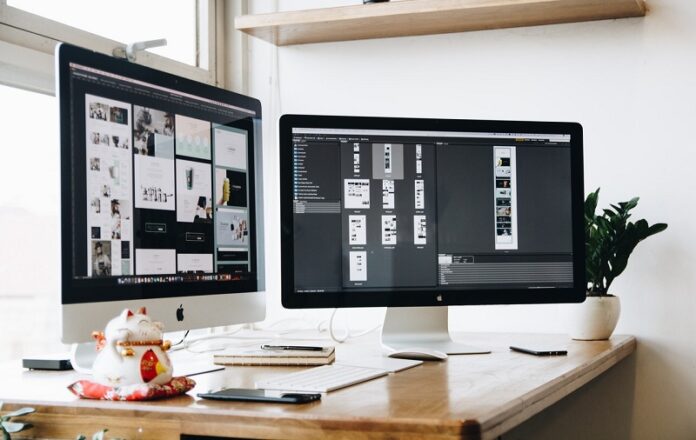Around 41.8% of the American workforce is working remotely in some capacity, and it is estimated that around 26% will continue to do so throughout 2021. For employees in many industries – including graphic design – the change has prompted life changes that can include setting up a home studio and working freelance at least part-time. If you are a graphic designer and things are looking up workwise – so much so that you are thinking of setting up a home studio – what elements should you ensure are present from day one?
Investing In Key Equipment
Graphic designers need several tools, ranging from a powerful computer (think the iMac Pro or similar) to an electronic stylus and graphics tablet. It is vital to invest in industry-standard devices, since features such as a large screen, significant memory, and a high quality graphics card will ensure that everything goes smoothly. If you are designing a printed magazine, newspaper, or similar type of media that requires clients to see advertisements prior to publication, investing in a photo-quality printer will be useful. This is because advertisers will wish to see their advertisement exactly as it goes to print, checking very precise features such as different tones of blue or green. A photo printer can fax, print and copy, so this type of machine can be a big space saver.
Choosing Space-Saving Furniture
A study by the National Association of Professional Organisers has found that cluttered workspaces can lead to significant financial loss. In order for workers to focus and be productive, workspaces should be tidy, and they should lean on the minimalistic side in terms of furniture. Since you are designing a graphic design studio, creativity and functionality should go hand in hand. Just a few designer pieces that may inspire you include architecture studio, Cavaa’s built-in furniture (literally ‘pull’ individual boxes outwards from the wall to access stored equipment); Thomas Gossner’s wall-mounted chair (made of thermoplastic); or SoBuy’s foldable table (which can be transformed from a shelf to a table as required). When choosing a table for your computer, paying more for a desk that has storage space is an excellent way to ensure all your tech and equipment is organized and close by.
Make Ergonomics A Priority
Ensure you do not skimp out on some of the most important pieces of furniture you will need – such as a good work desk (a standing desk is ideal to avoid the effects of sitting for too long) and an ergonomic chair. Your chair should be adjustable so you can place it at the exact height with respect to your monitor. You should also have a footrest for greater leg comfort. The weight of your arms should be continually supported, to avoid neck and shoulder strain. Make computer ergonomics a priority as well, ensuring your display screen is level with your eye line and placed at around an arm length’s distance to prevent computer vision syndrome. You should also ensure your display brightness is not left at the default setting. Instead, adjust it to the brightness of your home office or studio. One easy way to do so is to take a piece of white A4 paper and look at it under the normal light in your studio. The screen should ideally match its brightness as closely as possible.
Bathing In Light
Your home studio should ideally enable free movement, contain natural lighting, and be well ventilated. If you have an outdoor terrace you wish to convert to a studio, glass curtains are a good choice, since they can be opened and closed depending on the weather. Recent research by Cornell University academics has shown that the optimal amount of daylight reduces eyestrain and headaches of office workers by 84%, which is a good enough reason to consider making small or larger changes. Interior spaces can be lightened up by opting for an open plan setting that enables light to reach as large an area as possible; if necessary, one or more walls can be knocked down to make room for a large window. Aim to be as close as possible to a garden. If you live in an urban area, bring indoor plants into your studio, since studies have shown that they can boost productivity and concentration.
If you are a graphic designer who is working remotely and you would like to go freelance, setting up a home studio can be a wonderful way to tap into your creativity. Start off by setting up a clean, tidy and ergonomic space: one in which natural light is given due importance. Invest in a few pieces of vital equipment, adding to your selection as time and budget permit.







![SIMS 4 Download Free For PC Full Version 2019 [UPDATED] SIMS 4 Download](https://www.geniustechie.com/wp-content/uploads/2019/03/SIMS-4-Download-100x70.jpg)

